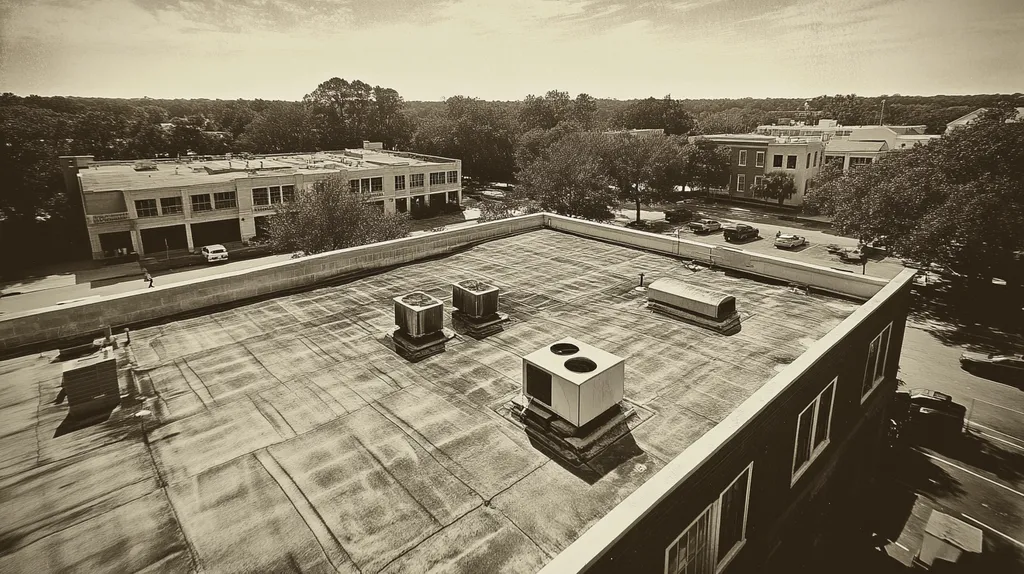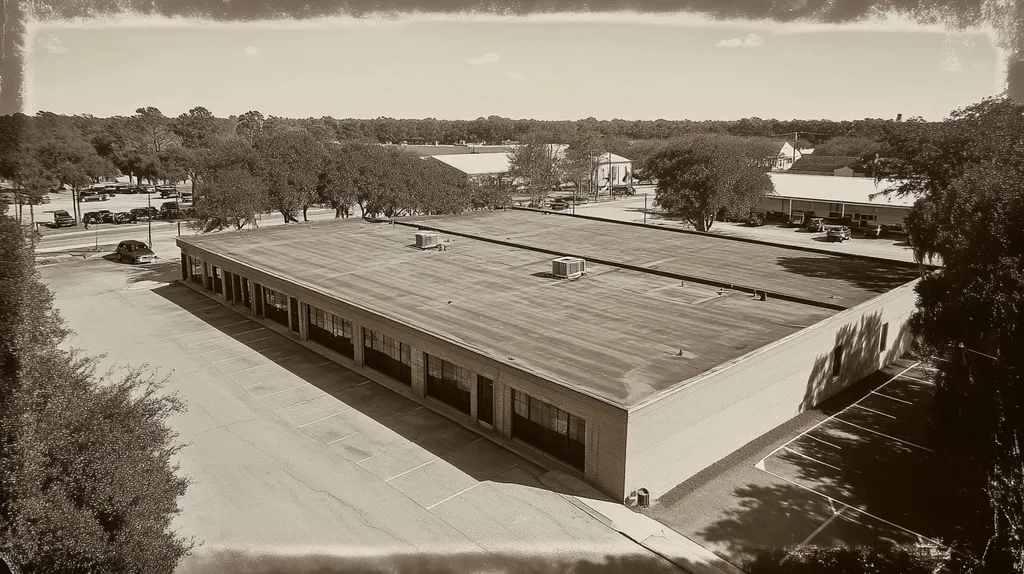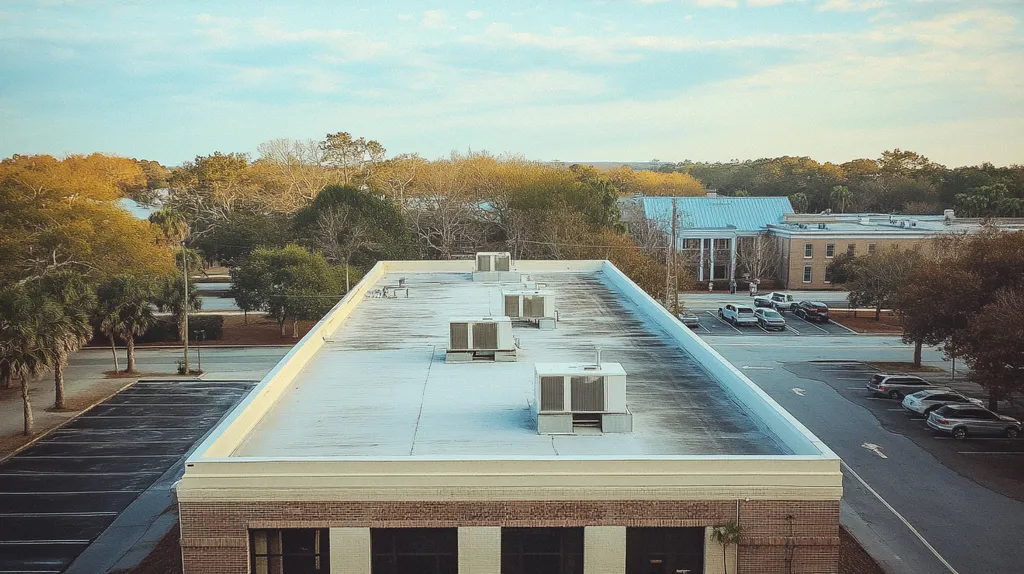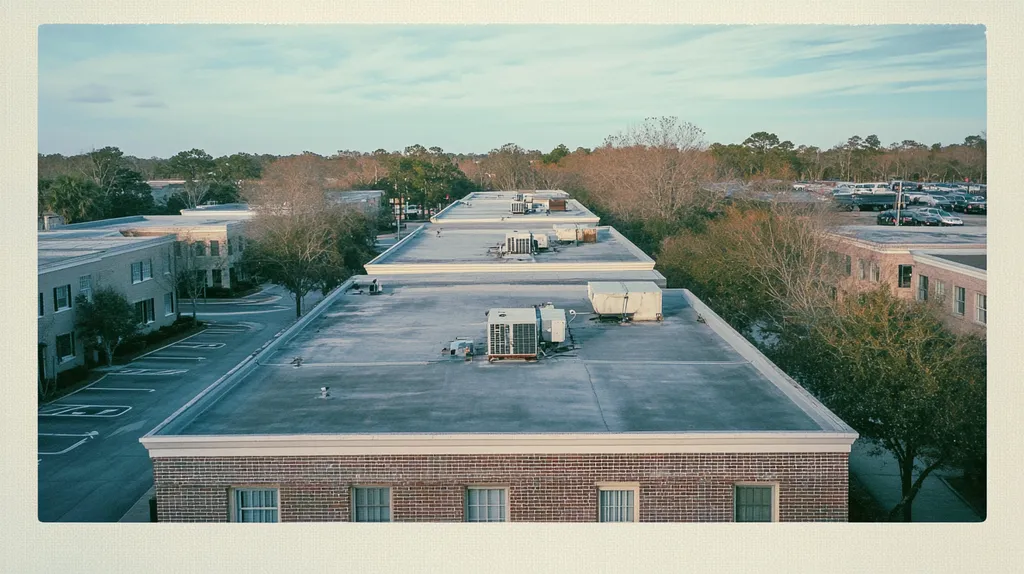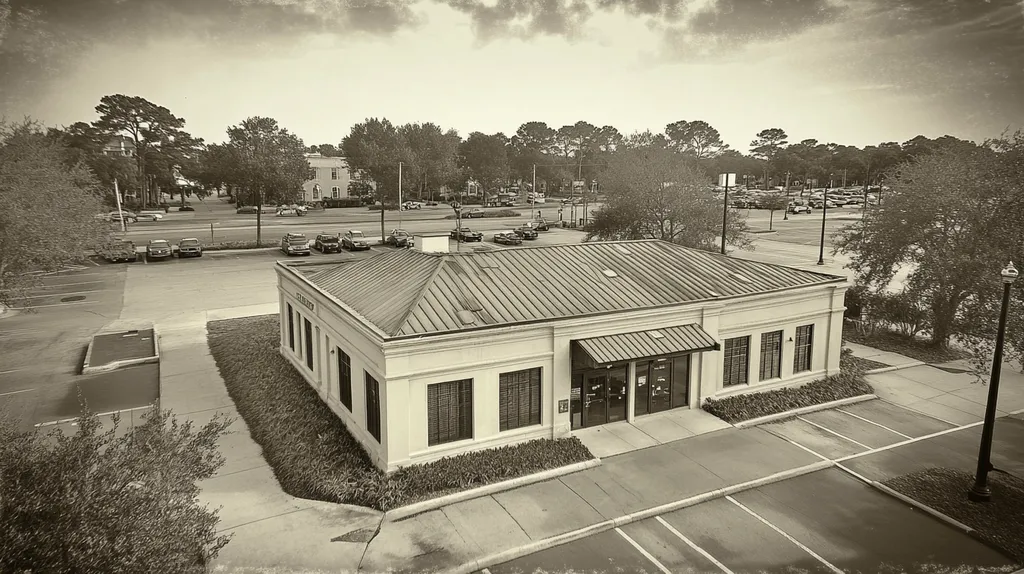In the industrial roofing sector, contractor certification failures lead to over $2 billion in damages annually, with individual incidents often exceeding $500,000 in repair costs.
Despite these high stakes, facility managers frequently misunderstand the complex web of required certifications, leading to catastrophic roofing failures that compromise structural integrity and worker safety.
This comprehensive guide examines the critical distinctions between various contractor credentials, exposes common certification myths, and provides actionable steps for protecting industrial facilities through proper qualification verification.
SECTION 1: COMMON MISCONCEPTIONS
Industrial roofing failures can lead to catastrophic consequences, with repair costs often exceeding millions of dollars. Yet many facility managers continue to make decisions based on outdated or incorrect assumptions about contractor qualifications. Understanding the truth behind these misconceptions is crucial, as choosing the wrong contractor can compromise structural integrity, safety compliance, and long-term building performance.
Licensing Guarantees Contractor Quality and Reliability
A common misconception is that licensing alone ensures contractor competence. While licensing establishes basic operational requirements, it represents only the minimum standard for legal operation.
Currently, 32 states mandate licensure for roofing contractors at the state level, while 18 states require licensing at various jurisdictional levels. These requirements can include multiple layers of compliance at state, county, and municipal levels. (source: Wolters Kluwer)
License requirements vary significantly in rigor and scope. Some jurisdictions demand comprehensive testing and ongoing education, while others maintain minimal standards focused primarily on business practices rather than technical expertise.
Most importantly, licensing does not verify specialized knowledge in modern roofing systems, sustainable materials, or emerging installation techniques. This gap between licensing and actual expertise can result in subpar installations that compromise building performance.
Certifications Are Uniform Across All States
The belief that roofing certifications carry equal weight nationwide leads to dangerous assumptions about contractor capabilities. Different regions face unique climate challenges, building codes, and installation requirements that affect certification standards.
State-specific certification programs often reflect local construction practices and environmental conditions. What qualifies as certified expertise in a dry, hot climate may not translate to regions with heavy rainfall or snow loads.
Professional certifications from national organizations can vary in recognition and validity across state lines. Some states maintain stringent requirements for certification transfer, while others may not acknowledge out-of-state credentials at all.
These variations in certification standards require facility managers to verify both the relevance and recognition of contractor credentials within their specific jurisdiction.
Manufacturer Certifications and Licensing Are Interchangeable
Manufacturer certifications demonstrate specific product expertise but should not be confused with state licensing requirements. These certifications verify that contractors understand particular roofing systems and installation methods.
Different manufacturers maintain varying levels of certification rigor. Some require extensive hands-on training and regular updates, while others might offer basic product familiarization programs.
Manufacturer certification programs typically focus on proper installation techniques for specific products rather than comprehensive roofing knowledge. This specialized focus means a contractor may excel with one manufacturer’s system but lack proficiency with others.
Understanding this distinction helps facility managers avoid overrelying on manufacturer certifications when evaluating contractor qualifications. Both types of credentials serve important but different purposes in ensuring project success.
SECTION 2: PRACTICAL IMPLICATIONS
Industrial roofing certification requirements directly impact project success, safety outcomes, and financial liability. Recent industry data shows that projects managed by uncertified contractors are three times more likely to experience catastrophic failures within the first five years. These failures often result in production shutdowns, inventory damage, and litigation costs that can exceed $500,000 per incident. Understanding the practical implications of contractor certification helps facility managers make informed decisions that protect their assets.
Impact of Contractor Certification on Project Compliance
Certified contractors bring vital expertise in navigating complex regulatory landscapes. Each industrial roofing project must comply with multiple layers of building codes, environmental regulations, and safety standards.
Most industrial facilities require specialized permits and inspections throughout the roofing process. Certified contractors understand these requirements and maintain relationships with local authorities, streamlining the approval process.
Documentation requirements vary significantly between jurisdictions, with many requiring specific certifications for particular types of industrial roofing systems. Currently, 32 states mandate specific roofing contractor licenses, with additional requirements at county and municipal levels. (source: Wolters Kluwer)
Non-compliance can result in work stoppages, fines, and mandatory remediation. These delays often cascade into production disruptions that cost facilities thousands per hour in lost productivity.
Role of Certifications in Ensuring Safety Standards
Safety certification requirements protect both workers and facility assets. Industrial roofing presents unique hazards, including fall risks, chemical exposure, and equipment operation at heights.
Certified contractors maintain comprehensive safety programs that address site-specific risks. These programs include regular training, equipment inspections, and emergency response protocols.
Modern industrial roofing systems often incorporate complex mechanical systems and hazardous materials. Certified contractors understand proper handling procedures and maintain necessary safety equipment.
Safety violations can result in OSHA fines, increased insurance premiums, and potential criminal liability. Certified contractors help protect facility owners from these risks through documented compliance programs.
Certifications Influence on Warranty and Liability Coverage
Warranty coverage for industrial roofing systems typically requires installation by certified contractors. Most manufacturers void coverage if uncertified contractors modify or repair their systems.
Insurance carriers increasingly scrutinize contractor certifications when evaluating claims. Work performed by uncertified contractors often results in denied coverage or increased deductibles.
Professional liability insurance for certified contractors provides additional protection. This coverage helps shield facility owners from financial losses due to contractor errors or omissions.
Long-term maintenance agreements, critical for warranty compliance, usually require ongoing involvement of certified contractors. These agreements ensure proper documentation and maintain manufacturer warranty coverage throughout the roof’s lifespan.
SECTION 3: COST OF MISINFORMATION
Industrial roofing failures triggered by misinformation about contractor certifications cost facility owners millions annually. Beyond immediate repair expenses, these failures cascade into production delays, inventory damage, and litigation. Recent data shows that facilities choosing non-certified contractors face repair costs averaging 40% higher than those working with certified professionals. Understanding these financial implications is crucial for protecting both immediate budgets and long-term facility operations.
Financial Risks of Hiring Non-Certified Contractors
Initial cost savings from hiring non-certified contractors typically evaporate within the first 18 months. These contractors often underbid projects by cutting corners on materials, safety protocols, and proper installation techniques.
Emergency repairs from improper installation frequently cost three to five times more than the original savings. These unexpected expenses often occur during peak production periods, maximizing their negative impact on operations.
Many facility insurance policies require work to be performed by certified contractors. Using non-certified contractors can void coverage, leaving owners fully exposed to financial losses from subsequent damage.
Non-certified contractors frequently lack proper bonding and insurance coverage. This gap leaves facility owners vulnerable to worker injury claims, property damage, and other liability issues that can persist for years after project completion.
Hidden Expenses from Poor Installation and Repairs
Substandard installations create cascading problems throughout industrial facilities. Water infiltration can damage expensive equipment, compromise structural integrity, and create hazardous working conditions.
Energy costs typically increase 15-25% when roofing systems are improperly installed. Poor insulation placement, inadequate sealing, and incorrect ventilation all contribute to ongoing operational expenses.
Production disruptions from emergency repairs average $50,000 per incident. These stoppages often require overtime labor, rush material orders, and temporary facility modifications to maintain operations.
Poorly installed roofing systems deteriorate faster, reducing their functional lifespan by 40-60%. This accelerated aging forces premature replacement, dramatically increasing lifetime ownership costs.
Legal and Insurance Consequences of Certification Oversights
Most jurisdictions require specific contractor certifications for industrial roofing work. Non-compliance can result in work stoppages, fines, and mandatory system replacement at the owner’s expense.
Building code violations from improper installation expose owners to significant liability. These violations often surface during routine inspections or property transfers, requiring immediate and costly remediation.
Insurance carriers increasingly scrutinize contractor credentials when processing claims. Work performed by non-certified contractors frequently results in claim denials, leaving owners responsible for repair costs.
Legal defense costs in roofing failure cases average $250,000, excluding settlements. These expenses typically fall outside general liability coverage when non-certified contractors are involved.
SECTION 4: REALITY CHECK
Industrial roofing certifications represent a complex landscape where misconceptions can lead to devastating consequences. Recent industry data shows that over 70% of catastrophic roof failures stem from improper contractor selection and certification verification. With industrial roofing systems becoming increasingly sophisticated, the gap between basic licensing and specialized expertise continues to widen, making proper credential verification more critical than ever.
Differentiating Between Mandatory Licenses and Voluntary Certifications
Mandatory licenses establish the baseline legal framework for contractor operations, focusing on fundamental business practices and basic safety requirements. These requirements vary significantly by jurisdiction, with 32 states mandating licensure at the state level, while others delegate requirements to local authorities. (source: Wolters Kluwer)
Voluntary certifications, by contrast, demonstrate specialized expertise in specific roofing systems, installation techniques, or safety protocols. These credentials often require rigorous training, testing, and ongoing education to maintain active status.
Specialty certifications focus on particular aspects of industrial roofing, such as thermoplastic systems, metal roofing, or sustainable installations. These credentials verify technical proficiency beyond basic licensing requirements.
Understanding this hierarchy helps facility managers avoid the common pitfall of equating basic licensing with comprehensive roofing expertise.
Commonly Overlooked Certification Requirements by Facilities Managers
Many facility managers overlook manufacturer-specific certification requirements that directly impact warranty coverage. These oversights often void material warranties, leaving facilities exposed to significant financial risk.
System-specific certifications ensure contractors understand proper installation techniques for particular roofing technologies. Without these credentials, contractors may compromise system performance through improper installation.
Safety certifications beyond basic OSHA requirements are frequently missed during contractor evaluation. These specialized credentials become crucial when working with hazardous materials or complex mechanical systems.
Environmental certifications, increasingly important for industrial facilities, verify contractor expertise in sustainable materials and practices. Missing these credentials can impact regulatory compliance and energy efficiency goals.
Evaluating Certification Credibility and Scope of Coverage
Not all certifications carry equal weight in the industrial roofing sector. Leading industry certifications require documented experience, comprehensive testing, and regular recertification to maintain active status.
Certification scope varies significantly between programs, with some focusing narrowly on specific products while others cover broader installation practices. Understanding these differences helps managers align contractor capabilities with project requirements.
Third-party verification of certifications becomes essential as some contractors may present outdated or invalid credentials. Regular verification ensures continued compliance and capability.
Documentation requirements for certified installations must be clearly understood and maintained. Proper records protect warranty coverage and provide crucial documentation for future maintenance or modifications.
SECTION 5: EVIDENCE-BASED ALTERNATIVES
Industrial roofing decisions carry massive financial implications, with poor contractor selection leading to premature system failures costing millions. Recent data shows that 65% of catastrophic industrial roof failures stem from inadequate contractor qualifications. By implementing evidence-based selection criteria through recognized certifications, third-party audits, and manufacturer programs, facility managers can dramatically reduce their exposure to these costly failures.
Recognized Industry Certifications and Their Standards
Industrial roofing certifications establish critical performance benchmarks that protect facility investments. Leading certification programs require contractors to demonstrate expertise through rigorous testing, documented experience, and ongoing education requirements.
Advanced certification programs focus on specialized aspects of industrial roofing, including thermoplastic systems, modified bitumen applications, and metal roof installations. These credentials verify technical proficiency with specific materials and installation methods.
Certification maintenance requirements ensure contractors stay current with evolving technologies and safety protocols. Most programs mandate regular recertification through continuing education and performance evaluations.
The financial impact of choosing certified contractors extends beyond installation quality. Insurance carriers increasingly offer premium reductions for facilities that exclusively use certified contractors, recognizing their reduced risk profile.
Incorporating Third-Party Quality Control Audits
Independent quality control audits provide crucial oversight throughout industrial roofing projects. These evaluations verify proper material handling, installation techniques, and safety compliance at every project phase.
Professional audit programs utilize advanced inspection technologies, including infrared scanning and electronic leak detection. These methods identify potential issues before they develop into systemic failures.
Quality control documentation from third-party audits strengthens warranty claims and insurance coverage. This documentation creates an unbiased record of installation quality and contractor performance.
Regular audit programs typically cost less than 1% of total project value while preventing failures that could cost 30-40% of the original installation price. This return on investment makes third-party oversight essential for protecting facility assets.
Leveraging Manufacturer-Endorsed Certification Programs
Manufacturer certification programs verify contractor expertise with specific roofing systems and materials. These programs combine classroom instruction with hands-on training to ensure proper installation techniques.
Advanced manufacturer certifications often include specialized training for emerging technologies like photovoltaic integration and green roof systems. This expertise becomes crucial as industrial facilities adopt sustainable building practices.
Certified contractors receive priority access to manufacturer technical support and warranty services. This relationship proves invaluable when addressing complex installation challenges or warranty claims.
Most manufacturer warranties require installation by certified contractors to maintain coverage. Using non-certified contractors for repairs or modifications typically voids these warranties, leaving facilities exposed to significant financial risk.
SECTION 6: TEST AND VERIFY
Industrial roofing failures from unverified contractors cost facility owners millions annually in repairs, production losses, and litigation. Recent industry data shows that 73% of catastrophic roof failures stem from inadequate contractor verification processes. With industrial roofing systems becoming increasingly complex and specialized, thorough credential verification has become essential for protecting facility investments and ensuring workplace safety.
Verifying Contractor Licenses and Certification Status Online
Industrial roofing contractors must maintain multiple levels of credentials that require regular verification. Currently, 32 states mandate specific licensure for roofing contractors at the state level, with additional requirements often including insurance documentation, specialty exams, and surety bonds. (source: Wolters Kluwer)
Professional certification databases provide real-time verification of specialized credentials. These systems track continuing education requirements, safety training compliance, and manufacturer-specific qualifications.
Digital verification platforms now integrate multiple certification sources into comprehensive contractor profiles. These tools enable facility managers to quickly assess a contractor’s complete qualification package.
Most certification authorities maintain public access portals for credential verification. These resources allow direct confirmation of specific certifications and their current status.
Conducting Due Diligence Through References and Past Projects
Reference verification must focus specifically on comparable industrial projects completed within the past three years. This timeline ensures relevance to current roofing technologies and installation methods.
Project documentation should include detailed specifications, installation photos, and maintenance records. These materials demonstrate the contractor’s attention to detail and compliance with industry standards.
Site visits to completed projects reveal long-term performance indicators and maintenance practices. Physical inspection provides concrete evidence of workmanship quality and system durability.
Financial references help verify contractor stability and project management capabilities. This information proves particularly crucial for large-scale industrial installations.
Utilizing Independent Roof Inspections for Quality Assurance
Third-party inspections provide crucial oversight throughout industrial roofing projects. Professional inspectors use advanced diagnostic tools to verify proper installation and system integrity.
Modern inspection protocols incorporate thermal imaging, moisture mapping, and electronic leak detection. These technologies identify potential issues before they develop into systemic failures.
Inspection documentation creates a permanent record of installation quality and contractor performance. This evidence proves invaluable for warranty claims and future maintenance planning.
Regular inspection programs typically cost less than 2% of total project value while preventing failures that could cost 30-40% of the original installation price. This return on investment makes independent oversight essential for protecting facility assets.
The Bottom Line
Industrial roofing certification failures cost facility owners over $2 billion annually in repairs, lost production, and litigation expenses.
Understanding and verifying contractor certifications represents the crucial difference between system success and catastrophic failure that can compromise entire facilities.
With 73% of major industrial roof failures linked directly to improper contractor qualifications, facility managers must implement rigorous verification protocols that examine licenses, specialized certifications, and manufacturer credentials.
The stakes have never been higher as industrial roofing systems become increasingly complex, with single failures often exceeding $500,000 in direct costs.
Moving forward, protecting industrial facilities requires treating contractor certification verification not as a bureaucratic hurdle, but as a fundamental risk management strategy.
FREQUENTLY ASKED QUESTIONS
Q. Does licensing guarantee contractor quality for commercial roofs?
A. Licensing establishes basic operational standards but does not ensure contractor competence. Some jurisdictions have minimal licensing requirements that do not reflect advanced knowledge in modern roofing systems. It’s important to verify the contractor’s specialized skills beyond just their legal licenses.
Q. Why does certification matter for industrial roof projects?
A. Certification demonstrates that contractors have the expertise to navigate complex regulatory requirements. Certified contractors are more likely to ensure compliance with safety standards and building codes, reducing the risk of catastrophic failures that can disrupt operations and incur financial losses.
Q. How do non-certified contractors increase costs for industrial roofs?
A. Hiring non-certified contractors may seem cheaper initially but can lead to costly repairs. Poor installations often require emergency fixes that escalate project costs, leaving facility owners vulnerable to additional financial burdens. These expenses tend to rise sharply within just the first 18 months after installation.
Q. Are all roofing certifications equal across states?
A. No, roofing certifications can vary significantly between states. Each region faces unique climate and building conditions, which impacts their specific certification standards. It’s crucial for facility managers to check if a contractor’s credentials apply to their local requirements and conditions.
Q. What should I verify beyond contractor certifications?
A. Beyond certifications, verify the contractor’s insurance, bonding, and previous project references. Ensuring a contractor has completed similar projects successfully is vital. Additionally, due diligence through site visits to past jobs can reveal critical insights into their workmanship quality and reliability.
Q. How can third-party inspections improve industrial roofing projects?
A. Third-party inspections ensure compliance with industry standards and installation accuracy. These evaluations utilize advanced diagnostic technologies to catch potential issues early, thus protecting against costly repairs and failures. Regular audits can significantly enhance the quality of the final product.
Q. What impact does contractor credential verification have on safety?
A. Proper credential verification plays a crucial role in maintaining workplace safety. Certified contractors are trained to handle specific hazards associated with industrial roofing, mitigating risks to both workers and facility assets. This diligence helps avoid accidents that could arise from improper handling or installation practices.

